
It's time to transform your paintings!
The Colour Mixing Detective
Stop mixing MUD and solve the mystery of your paints once and for all!
ONLINE Painting Course Returns in a few months
ONLINE Painting Course Returns in a few months
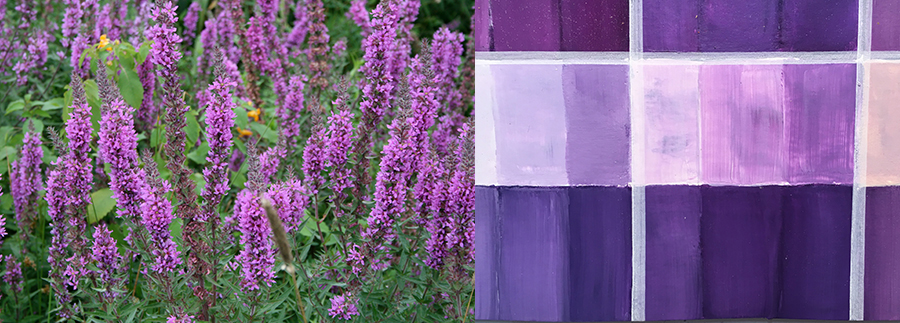
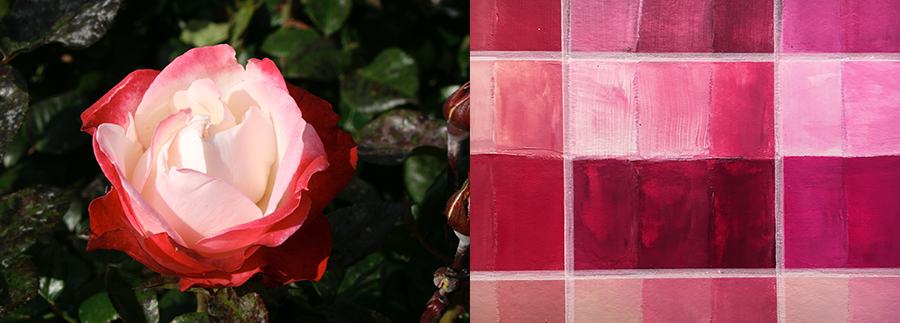
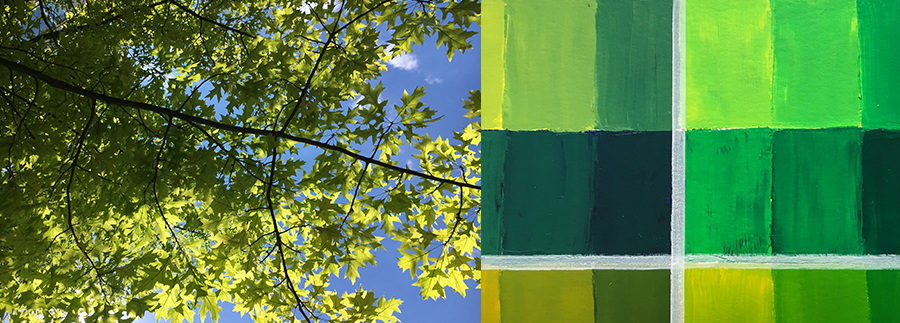
Photos: Gareth Bate. These are collaged details of the colour charts you'll be doing for the course.
Are you constantly mixing MUD instead of the colours you want?
Have you ever mixed a great colour that felt accidental? And then you had no idea how to recreate it?
Are you wasting expensive paint and washing money down the drain?
Do your paintings look unsophisticated because you use paint straight out of the tube and boring obvious colours?


Photos: Gareth Bate.
Ever wondered if there's some secret to colour mixing that no one has told you? Someone must know something.
Do you repeat the same colours on every painting because you're intimidated by your paints or scared to experiment with new colours?
Have you been frustrated by a previous colour "theory" course with zero practical value?
Or does your career in film/theatre/interior design require you to have a nuanced understanding of colour?
If you answered yes to most of these. You're in the right place.
“Before taking the course I wasn’t confident. All I knew was the basic primaries and secondaries. I was frustrated by not being able to create what I wanted to see. I wanted sophistication in my work and colours that didn’t look obvious. I wanted colours that were special. I wasn’t confident to mix them, so I would just buy them. I was concerned that the class would be hard and it would show my limitations.
Now my sensory perception of colour is heightened. Everything is so vivid. I’m able to see beyond what my mind initially thinks is there and push past that first thought. What’s really making that colour? It’s like thinking critically... I would definitely recommend the course.” - Natalie Lowe
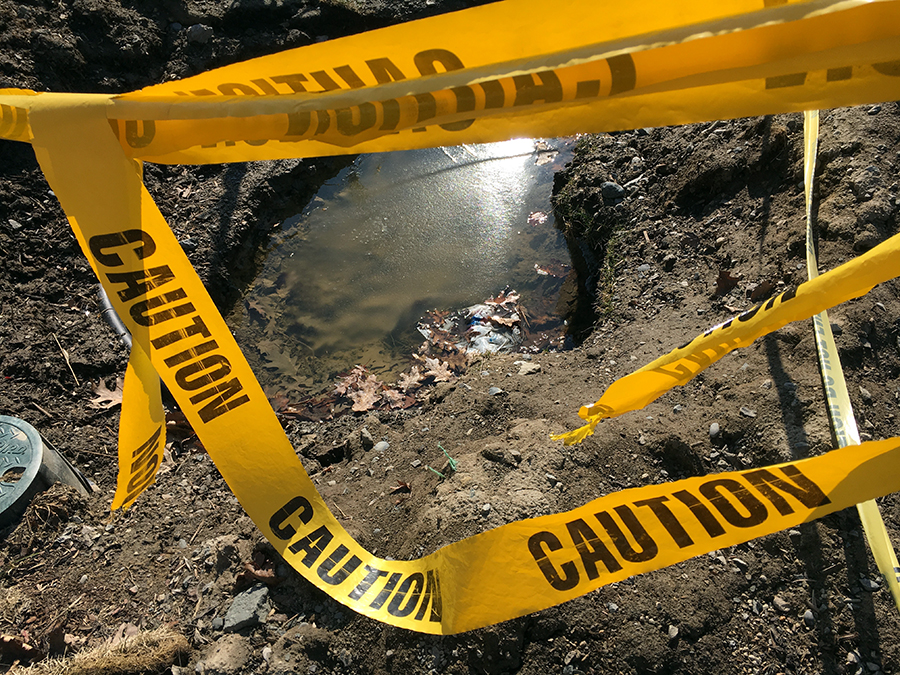
Careful! This is a crime scene!
There's been a murder and it's YOUR PAINTING!
Sometimes painting can be more dangerous than Midsummer County. Sadly bad things happen to good paintings. You were working away and then suddenly it all turned into an awful mess. What happened? Who's the villain of this story? Well in my experience it's almost always the obvious person - MUD!
But you're about to lay down the law when you become... The Colour Mixing Detective.
Ok, let's solve this mystery.
Welcome to your first case Sargent! We have an investigation to get to so it's time to put those little gray cells to work. It doesn't matter if your paintings are realistic or abstract, landscapes or portraits every one who paints needs to know how to properly mix their colours. Mixing beautiful sophisticated colours will take your paintings to a whole new level. Understanding paint makes you a better painter.
Learning colour mixing is like doing scales on a piano. It’s not the creative part like performing the song in a concert, but it’s all part of the process of learning and practice. What most people do is avoid ever addressing this problem. They don’t want to do the work.
To understand paint you need to understand it's nature.
I want colour mixing to become effortless for you so you don’t have to waste any more time worrying about that stuff. It's time to end the frustration. This is a course you do once and then never have to think about how to mix your colours again. This is a totally learnable skill. You'll gain a deep understanding and then be free to pursue the real work of finding your artistic vision.Making art is about so much more than mixing colours.
"I would say, if you want to really understand colour mixing and want a deep structure and understanding take the course."
- Alison Fleming
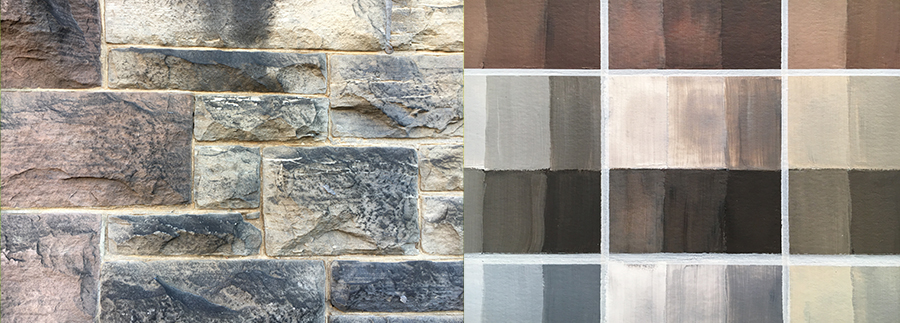

Photos: Gareth Bate.
This is the course I would love to have had as a student.
It's one-of-a-kind and far better than anything I learned in my 6 years in art school regarding colour mixing. I've built it over the last three years.
I can totally relate to your frustration with colour mixing. The problem isn’t you. It’s the way colour mixing is taught. Oh pardon me, I should say ISN’T taught. I had the same feelings when I was a student. I got around this by doing every colour mixing exercise in multiple books. Luckily for you I’ve created a course that doesn’t require you to spend this ridiculous amount of energy. In fact creating my colour charts has significantly improved my colour mixing.
There comes a point in your artistic practice where you have to just do the work that needs to be done. Consider this course as a chance to learn what you need so you can finally move forward in your work.
It's time to take yourself seriously as an artist.
“Before I took the course I had some idea of the differences between reds, blues and yellows, but I really couldn’t have looked at a colour and been able to know how I’d even begin to mix it. Now I feel like I can do that. My biggest frustrations would be getting to a colour that I didn’t really want, and not being able to fix it. Sometimes I would add more colour and it would just get worse.
Taking the time to do the exercises in class and the homework colour charts was invaluable. Once I got started I found it was a lot easier to do it. Doing the homework is essential. I’m interested now in using new colours in my paintings. I might not have ventured into a different palette had I not taken this course. I really liked that it got more complex as we worked through it. It was structured really well. You have an ability to see where people are at and offer individualized feedback. I found the instruction very good. You had a good overall sense of how to present to a group and work with people individually.
Now when I’m looking at a painting in an art gallery I’m much more interested in the colours they use and how they mixed them. I spend longer looking at a painting now to try to appreciate the colours. There’s a lot going on in them. Far more than you might think. I wouldn’t have done that before. I wouldn’t have had that perspective. ” - Catherine Turl.
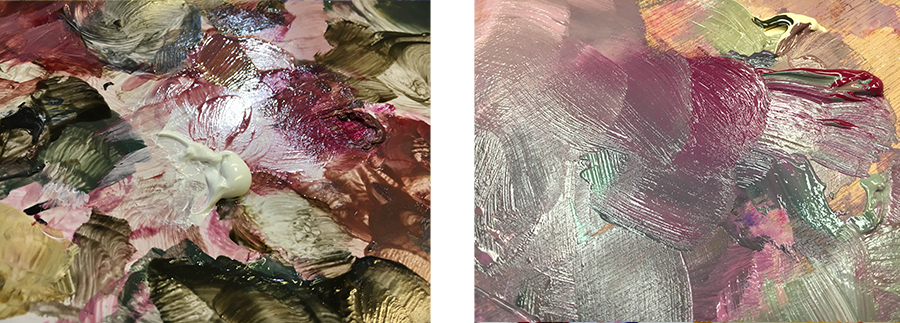
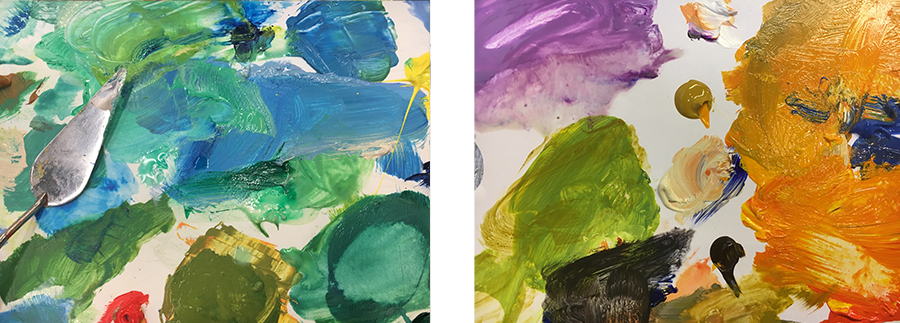
Photos: Gareth Bate.
Art Untangled
I created Art Untangled to teach one-of-a-kind courses that you can't find anywhere else. These courses get right to the heart of the painting problems you face. Rather than learn everything at once I break it down into courses that focus intensely on a single issue like colour mixing, painting techniques or colour relationships etc. They're about putting in the work over a relatively short period of time so that you can save YEARS of struggle. There’s a lot to learn in painting and drawing but it doesn't need to take you decades if you learn it well from the start with the right teacher.
Here's How the ONLINE Course Works
For the last two years I’ve been systematically building my online art school - Art Untangled. Because of the Covid-19 I'm going exclusively online for the foreseeable future. I don’t anticipate this social distancing and quarantining ending any time soon. But I intend to keep teaching and learning during this time. I hope you will keep learning too. I've put a considerable amount of time into making these online courses work.
I know that these are stressful and anxiety inducing times for all of us. We don’t need more pressure and things change from day to day. For that reason I have divided this course into two parts. This is because I have already completed all the online content for Part 1, I have yet to finish the online content for Part 2. When you sign up you will be invoiced for Part 1 ONLY. If I’m then able to complete Part 2 you can opt-in for that part down the road and pay then. At this point I can’t commit to a date for Part 2 but I'm aiming for winter 2021. Or you could choose to opt-out of Part 2 if it’s not the right time for you. I think we all need some flexibility right now. This coarse is for people who want to stay busy and do a lot of technical painting work right now. I’ll be sending you the charts each week. But it’s your call if you want to do them. You don’t have to do them all. Just do what you want to do.
Part 1 - Now
COLOUR MIXING LINEUP CHARTS: Over several years I've invented an amazing and comprehensive system of colour charts. They're awesome and one-of-a-kind. They allow you to see a massive range of colour mixes. This would have been my dream come true as a student! My in-person students did these charts as homework each week. So there’s no difference between what you’ll do and what they did. Students have described doing these charts as like a mindfulness meditation. Relaxing even. Some students think the charts are the best part of the course. They’re addictive. Seriously, get ready to mix a ton of colour charts!
The emphasis won't be on theories of colour but rather on the practical task of how to actually mix pigments properly. Sometimes the results are surprising and unpredictable.
I break it down into different colour groups. The course is delivered in detailed pdf instruction manuals that I’ll send to you via email. These are clearly written with tons of pictures. You could print them out if you can, or work from your screen. Once you know how to do them, you no longer need the manual. You can complete as many as you can. There are some basic videos at the start to get you going. But this is not a video based course. You should be prepared to put in at least 4 hours a week for this course. Each week I’ll send you a new group of colour charts. You will have access to them all so you can go at your own pace. To complete these charts you will need 24 very specific colours.
WHO CARES PAINTING: So you’ve completed the charts for the week. Now try applying the leftover colours you’ve mixed to a little “Who Cares Painting” you keep on the side. This often turns into something interesting because you're not trying to make art. Who cares! You're just messing around and playing.
Weekly Colour Themes
Pre-Course: Colour Wheel and Earth Tones in advance Chapter 1: Earth Tones Chapter 2: Reds Chapter 3: Blues Chapter 4: Yellows Chapter 5: Phthalos Chapter 6: Oranges Chapter 7: Purples Chapter 8: Greens Chapter 9: Purple Phthalos Chapter 10: Green Phthalos
Part 2 - Later
This part of the course I’m currently unable to deliver online. But I’m working on it! So you will not be charged for this portion until I’m able to deliver it. I will invoice it separately - later. You can choose to opt-out if it’s not the right time.
COLOUR FORENSICS: This part of the course involves closely studying paintings and reproducing the colours you see in them. So you are solving the mystery of how those colours were made. Students have described this part as like CSI. Kind of like doing forensics on a painting. This is where all the work you did on the extensive colour charts really pays off. You’ll have a reference guide to figure them out. This will give you lots of experience trying to mix all sorts of different nuanced colours. Essentially you fixate on every aspects of the colour. We'll keep detailed notes on the mixes. I will teach you how to identify the ingredients that made each colour so you never again have to wonder how a colour was made. You’ll be able to figure it out.
LIFE-LONG REFERENCE BOOK: At the end of the course you'll pull all your work together into a beautiful portfolio sleeve book. You'll have a comprehensive manual of all kinds of colour mixes you can refer to for years to come. Now that I have all these charts I reference them constantly for my paintings.
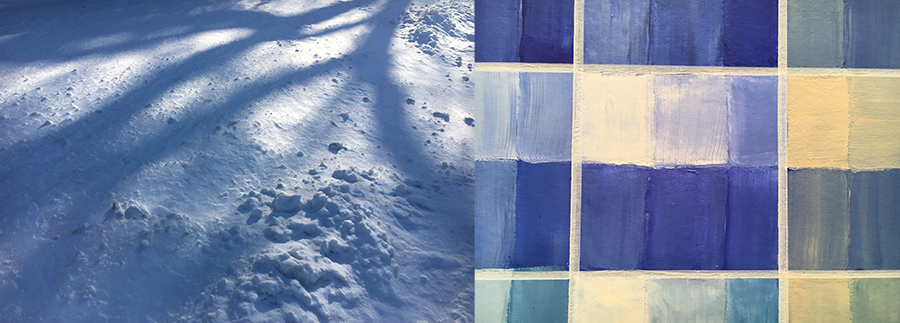

Photos: Gareth Bate
ART SUPPLIES
Here are the pdf guides to the materials you need to get.
I understand that sourcing art supplies right now is a challenge for some people. The stores are currently open. If you're uncomfortable visiting the store could you ask someone else to do it? If they can get the pdf on their phone they could go for you.
But you could also order them online. You need to get these 24 exact paint colours. You choose to work in one medium. I’ve been working on contacting art supply stores and suppliers directly. I’ve created a supply list that you can order directly to ensure that you get exactly the right materials. I’ve done as much work for you as a I can. Given the circumstances, you may find that you can get a lot of the colours but you are missing a few of them. Or some are delayed. If this is the case just skip those colours on the charts and do the ones you are able to do. Return to them later. We are all trying to adapt and make it work. Ultimately, you will have the charts, so you can do them when you can are able.
FEEDBACK
I will set up a private Facebook group where you can post your charts as you finish them. You’ll be able to interact with the other students going through the course. I will pop in from time to time and give feedback about your charts and “who cares paintings” during the run of the course via the facebook group. I know Facebook is unpopular with a lot of people, (myself included). Right now it’s the easiest way to make this happen. You can choose to opt-out of this aspect and just receive the course materials. But the feedback I'll be giving will take place in that Facebook group. Most of part 1 is straight forward so it doesn't require a ton of feedback from me. You are just following the instructions in the pdfs. But I will only be doing group feedback via the Facebook group. You could make a fake profile and join the group if you don't want to be on Facebook as yourself.
Change your perception
You'll start seeing how beautiful and sophisticated the colours are in famous paintings. Students get obsessed. You'll be mixing colours you've never thought of. You’ll suddenly be seeing colour all around you differently.
Let's be clear - this course requires discipline. It's a lot of work. You need the right mindset. It is not about doing creative paintings and expressing yourself. This is about doing the hard stuff that most people never bother to do. You'll be taking your paintings to the next level.
Advantages of Online Learning

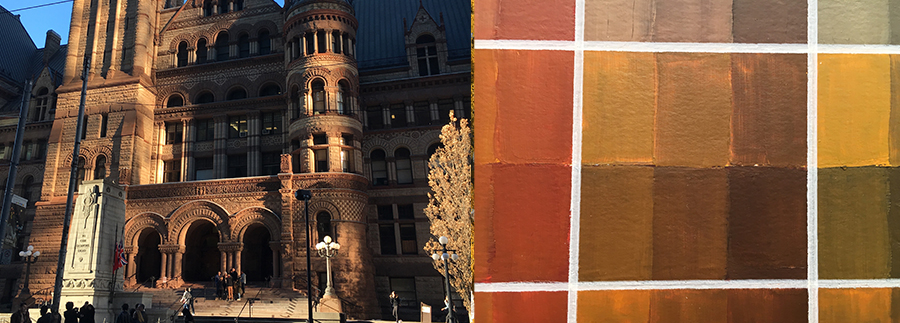
Photos: Gareth Bate
Art Untangled
The Colour Mixing Detective
Stop mixing MUD and solve the mystery of your paints once and for all!
DETAILS
Registration:
Course Location: ONLINE ONLYInstructor: Gareth BateMy Location: Toronto, Ontario, CanadaDates: Returns in a few monthsDuration: Part 1: 10 Weeks + Bonus Pre-Class Week
Registration Starts: Returns in a few monthsRegistration Deadline: TBA
Price and Registration Info at the bottom of this page.
Your painting supplies are not included - see full list in the pdfs.
Please sign up right away rather than waiting so I can send you your materials list. You may be in a location that requires online ordering right now.
DATES for Part 1
The course is delivered online with each new assignment arriving on Monday mornings. There is no live component so the work can be done at any time.
Pre-Course Colour Wheel and Assignment 1 in advance: You can start as soon you've payed the course fee! Week 1: TBA Week 2: TBA Week 3: TBA Week 4: TBA Week 5: TBA Week 6: TBA Week 7: TBA Week 8: TBA Week 9: TBA Week 10: TBA
Dates don't work for you?
If you're interested in this course but these dates don't work for you be sure to subscribe to my newsletter so you get updates from me about future courses. Shoot me an email to let me know that you're interested. contact@garethbate.com
SPECIAL OFFER:
You can SAVE $25 off your course price if you sign up a friend who hasn't taken my courses in the past. I take $25 off for each person you sign up.
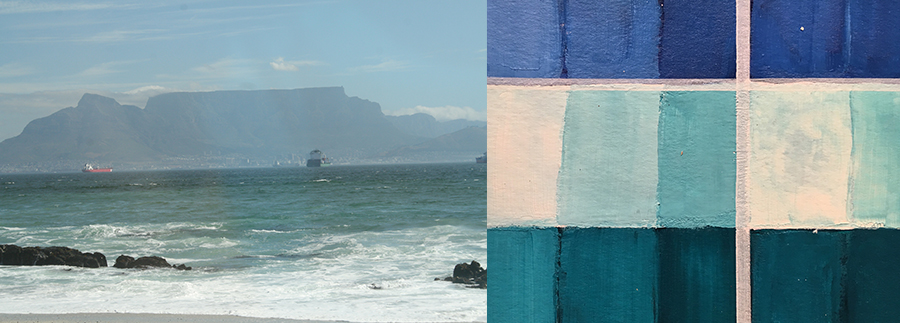
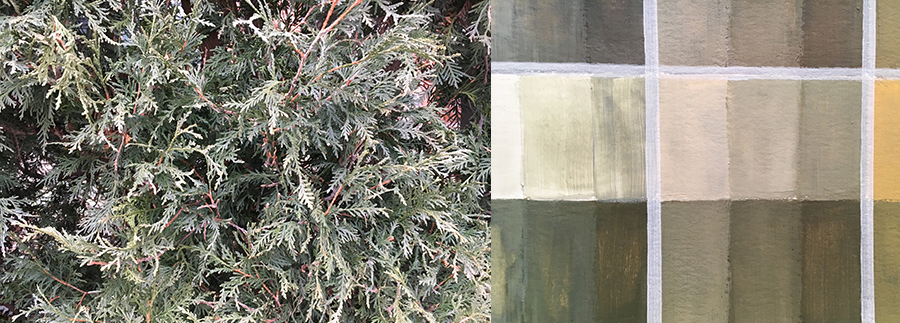
Photos: Gareth Bate
Course Frequently Asked Questions
I did a previous Colour Theory course and it was boring and repetitive. If I have to do another colour wheel I'll scream. I still don't know how to mix colours. How will this be any different?
The Colour Mixing Detective is completely different from regular colour theory courses. I don't care about theories at all. They're irrelevant for mixing actual pigments. I created it based on what I think is essential to learn to understand colour mixing based on 25 years of painting experience. I'd say don't worry about that previous course. Consider it your intro to theories and this one as the practical side. I would honestly say that the majority of students have ended up obsessed with colours after a few weeks of the course. It's intensive and focused work but very rewarding..
"The class was hands on, not theoretical colour theory. I did that course before somewhere else. Learned nothing in the other class - learned tons with you." - Mary Ann Grainger
I'm worried this might be too hard for me. Will I be able to do it?
You gotta start somewhere. This is the reality of painting. My feeling is learn technical skills when you're ready for them. It's not about making masterpieces. Once you get the hang of colour charts it’s very straightforward.
This sounds like a lot of work, I’m a little intimidated…
My courses are for real and designed to master the subject matter. They’re one-of-a-kind and intensive. If you put the time in you’ll make major progress. Like I said, this trims off years of work.
Out of all your technical courses which should be done first?
Colour Mixing is foundational to all painting. There is no escaping it. Doing this course before Brushstrokes and Painting Effects will make it much easier. I would say start with this one.
I'm a total beginnner. Is this appropriate for me if I'm new to painting?
Beginners can do this course. Students with no experience have often done almost as well as those with lots of experience. The advantage of doing it right away when you are new, is that you can learn things right from day one. You don't need to undo things.
To me, there are two types of art students. One likes to leap right in creating paintings and the main motivation is creativity and self-expression. This type is better off doing some paintings and then acquiring technical skills along the way when you realize you need them. The other type likes to have a technical foundation in order to feel comfortable starting to paint. They want some assurance of competence with the materials before launching in to the creative part. If you’re the first type you’re better off taking my online course My Inbox Art Project. If you’re the second type then this class works perfectly. If you’re unsure, email me and we can talk. Ultimately, as an artist you need to do both the creative and the technical work.
I've been painting for a number of years, is this going to be too easy for me?
No. I've been painting for 25 years and creating my colour charts system blew my mind. When I created them I was amazed by how much variety I found. I had never mixed the vast majority of those colours in my paintings. You might know the basics but you don't know the full range of possibilities. This course works perfectly for people with no experience as well as those with lots of experience. Once you’ve done the charts then apply the colours to your own little paintings. It will make an enormous difference.
How does doing these charts help me to mix colours in my own paintings?
By doing the charts you'll learn to recognize the subtle distinctions between pigments in a mix so that when the time comes with your own paintings you'll be able to recreate that colour you came up with. You'll learn the subtle variations that make all the difference in creating beautiful nuanced colours instead of obvious straight out of the tube colours. You'll also be exposed to colour mixes that are different from your own inclinations. This will help you to open up to using colours that might not feel natural to you but will enhance your range.
Why did you choose these particular colours? You don’t have “primaries” or some of the cool ones I like to use?
I have very carefully refined my colour list over the years of developing this course. These colours allow you to mix a massive range. You can do everything you need to do with these colours. There is no such thing as a primary “red” etc. There are many different reds. Some lean towards orange, some towards purple. You need to have those different ones. I also chose colours which are classic and available in many different brands. I didn’t pick anything gimmicky. That being said there’s a lot of beautiful colours that are not on the list. But doing the course will teach you to identify what kinds of results you’re likely to get with those other colours so you can add them in later if you want. I’ve painted for years with the colours on this list.
I work in the makeup/film/theatre/interior design industry would this class work for my professional career?
Absolutely. The course is geared towards fine art painters but I've had a number of students go through who have worked in set painting, makeup design and interior design. They've found it very helpful and applicable to their careers. It's all about gaining awareness and understanding of colour and that knowledge applies to industrial paints or makeup in your actual job. Send me an email if you have questions about whether the course would work for you and we can talk about it. You'll need to use artist materials so feel free to contact me about what medium would work best for you.
Can I do this course with a friend or family member?
You can both sign up individually. Both would be required to pay. I ask you not to share this with people who have not paid. All the course materials are proprietary and I’ve spent a massive amount of time developing them. I appreciate your honesty in this regard.
Can I paint in watercolour?
Yes, but please note that my colour charts and pdfs have been done in acrylic. There’s little difference for oil, but for watercolour you may need to make your own adjustments. I have not yet done charts specifically in watercolour. That’s on my to do list. I don’t get into watercolour techniques in this course.

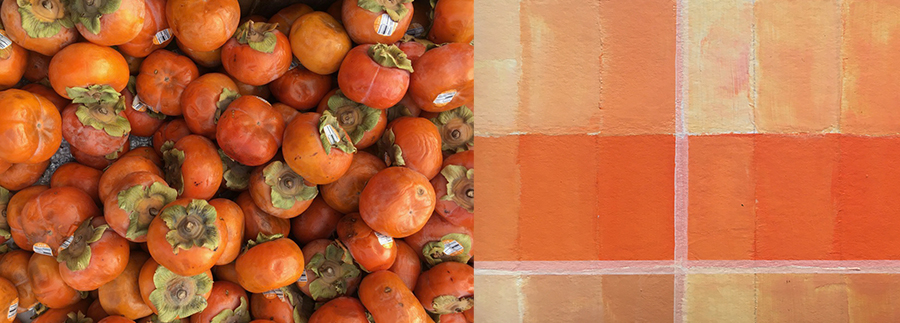
Photos: Gareth Bate
Materials Frequently Asked Questions
I'm unsure about this course because of the cost of the course and materials. Do we really need all these paint colours?
The Part 1 colour charts alone are worth the full price. I totally understand the concern about the cost of materials. I have the same experience every time I go to the art supply store making art is not cheap. I've taught this to over a 120 students and I've refined the course material list to the essentials. You won't regret buying any of these colours. They will be the foundation of your colour palette from this point forward. I've selected colours that allow you to mix nearly every colour you'll encounter.
It's impossible to mix every colour using blue, red and yellow or even a six colour system. That's way too simplistic. The problems most students have is previous teachers telling them that they only need a few colours to do their paintings. This is not true and leads to a lot of frustration. That being said, you also don't need millions of colours. This list is the essentials in my opinion. I promise you that you will waste considerably less paint in the future after taking this course.
What brands of paint should I use?
I think you should always use artist quality paints from day one. One of the biggest issues students have with painting is using crappy student paints. By starting with professional paints you learn to paint once rather than having to learn twice when you end up switching. Good paint makes good paintings. For Acrylic I'd say go with Golden. For Oil I'd say go with Gamblin, Williamsburg or Grumbacher. For Watercolour I'd say Daniel Smit (expensive) or Winsor and Newton (Cheaper).
What medium should I use?
Acrylic: Most students work in acrylic as it's easy and dries fast. But if you plan to work in another medium for your paintings then use that medium.
Oil: Working in oil is fine. Be mindful that you will need to use Gamsol or odourless mineral spirits for clean up. So you need to have some ventilation in your space. Water mixable oils are also fine.
Watercolour: It's fine to use watercolour as long as you're committed to it as your medium of choice. Keep in mind that watercolour is very challenging and arguably the hardest medium. If you're just looking for a medium to use then I'd go with acrylic. The course is NOT specifically geared to watercolour. My charts are done in acrylic. But you could use it if you’re willing to make your own adjustments. Be sure to let me know if you intend to work in watercolour.
Unsure if this is for you?
Shoot me an email and we can chat about it. contact@garethbate.com
Ready? Continue on to join us!
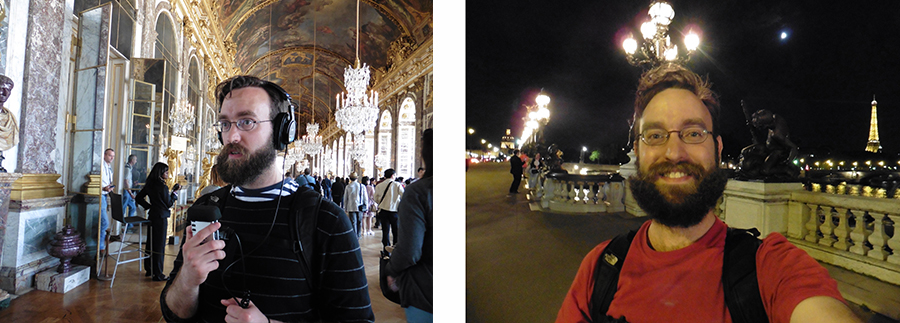
About Me
My name is Gareth Bate and I’m a full time artist, curator and art teacher living in Toronto. I work in painting, installation and photography. I have an email newsletter called "Art Untangled" where I regularly talk about art. You can subscribe here. I've been asked if everything I do revolves around art and the answer is pretty much yes!
I've travelled extensively and visited all the major museums in London, Paris, New York, Washington DC, Boston, Montreal and Cape Town. I'm Festival Curator of the World of Threads Festival an international festival of contemporary fibre and textile art in Oakville. I graduated with a BFA from OCAD University and a diploma from Central Tech's adult art program. I've been teaching since 2008. I’ve been featured on CBC News and Radio Canada and in the Globe and Mail, Toronto Star, Now Magazine and La Presse among others.
Here are the ONLINE courses I teach: The Colour Mixing Detective Part 1 The Colour Mixing Detective Chief Inspector (Advanced) Brushstrokes and Painting Effects Part 1 My Inbox Art Project: Home Edition
So it’s time to make a decision.
You can continue to play with MUD...
Or you can join us and learn to mix your colours properly.
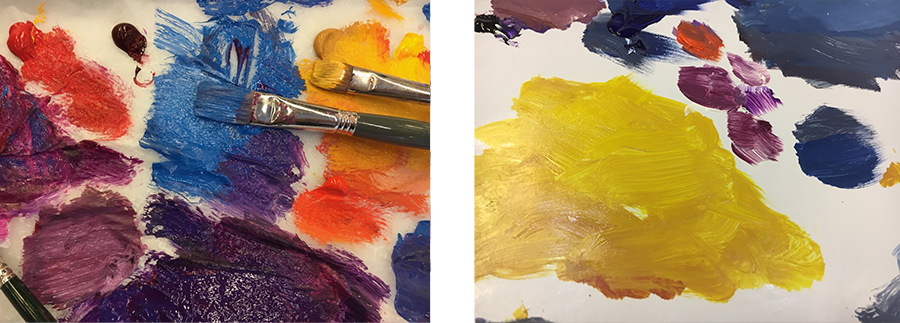
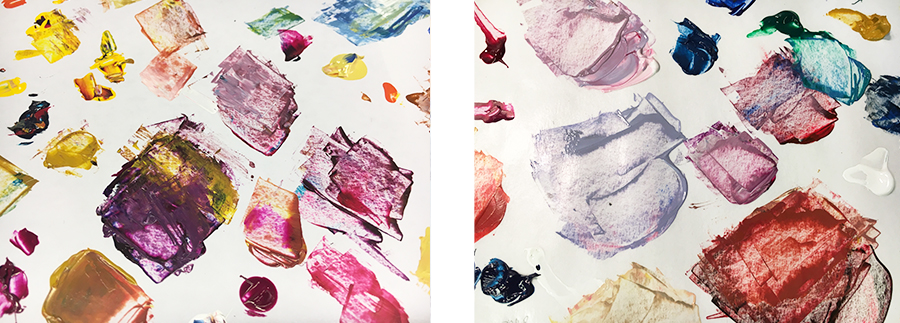
Photos: Gareth Bate
Register Now to
Reserve Your Spot!
Registration
PART 1 COST: $400 - Now
PART 2 COST: $400 - Later
+TAX for Canadians depending on region
SPECIAL OFFER:
You can SAVE $25 off your course price if you sign up a friend who hasn't taken my courses in the past.
How to Pay
When you book I'll send you an invoice. You can then send me an online e-transfer or cheque. Payment is required to be sent within two days of receiving the invoice. Course fee is before tax. As soon as I've received payment I will start to send you course materials.
Refunds Policy
I'm 100% confident in the value of this course. I therefore don't offer refunds. It's important to commit to taking the course. I offer a lot of information on this page to help you make a decision. If you're unsure, send me an email and we can talk about it.
"I liked that you gave us honest feedback, helped us see where we had not matched colours correctly, indicated when YOU couldnt quite get the colour at first stab and mainly your supportive, warm style." - Alison Fleming
Here's how to register...
Send me an email: contact@garethbate.com
Subject Line: Registration for The Colour Mixing Detective ONLINE
What to include:
Full Name
Your Pronouns
Your Email
Your Cell Phone (so I can communicate with you if necessary)
Full Address:
What medium do you plan to work in?
Payment Policy: Payment is required on registration within 2 days of receiving your invoice.
Payment Method: Online: e-transfer or cheque for Canadians.
Your Expectations: Anything in particular you're hoping to learn?
Do you plan to get your art supplies from stores, online or a mix of both?
How did you hear about the course?
What happens next?
After you register I’ll confirm in an email and then send you an invoice. After payment is received I’ll send full course info and pdfs of the art supply list.
Still Got Questions?
Send me an email: contact@garethbate.com
I'm looking forward to it!
Please share my courses with anyone you know who might be interested.
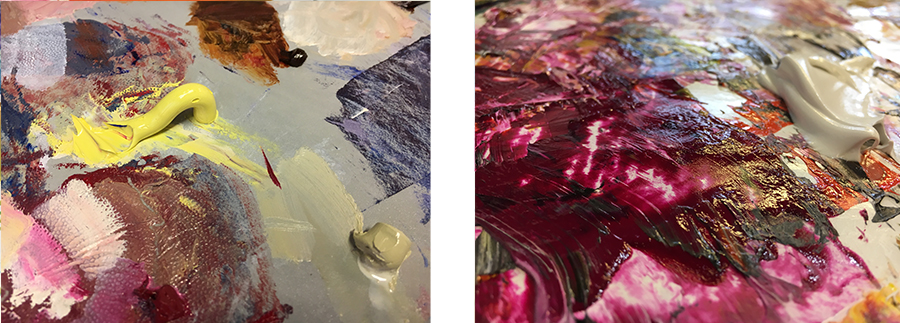

Photos: Gareth Bate